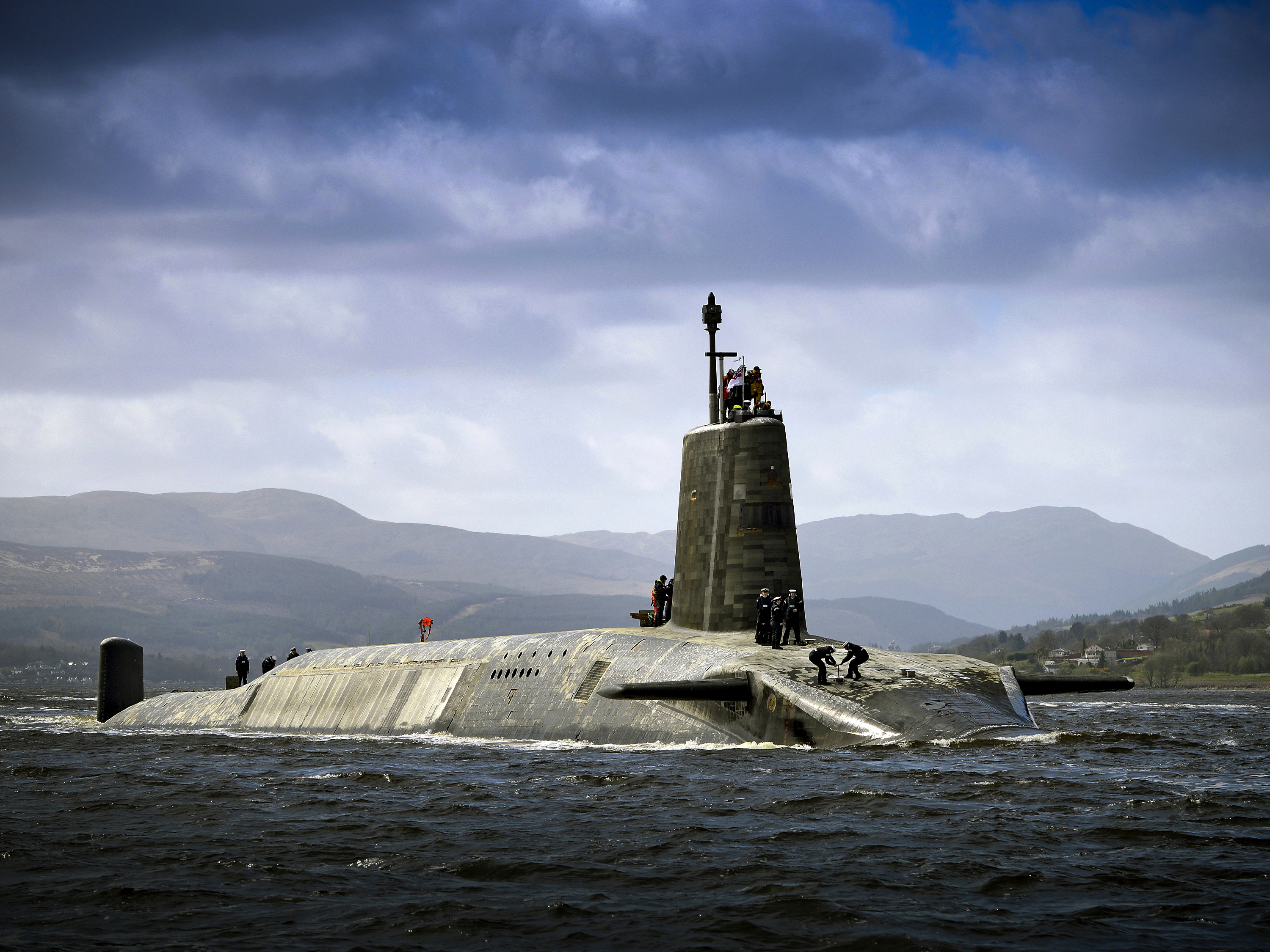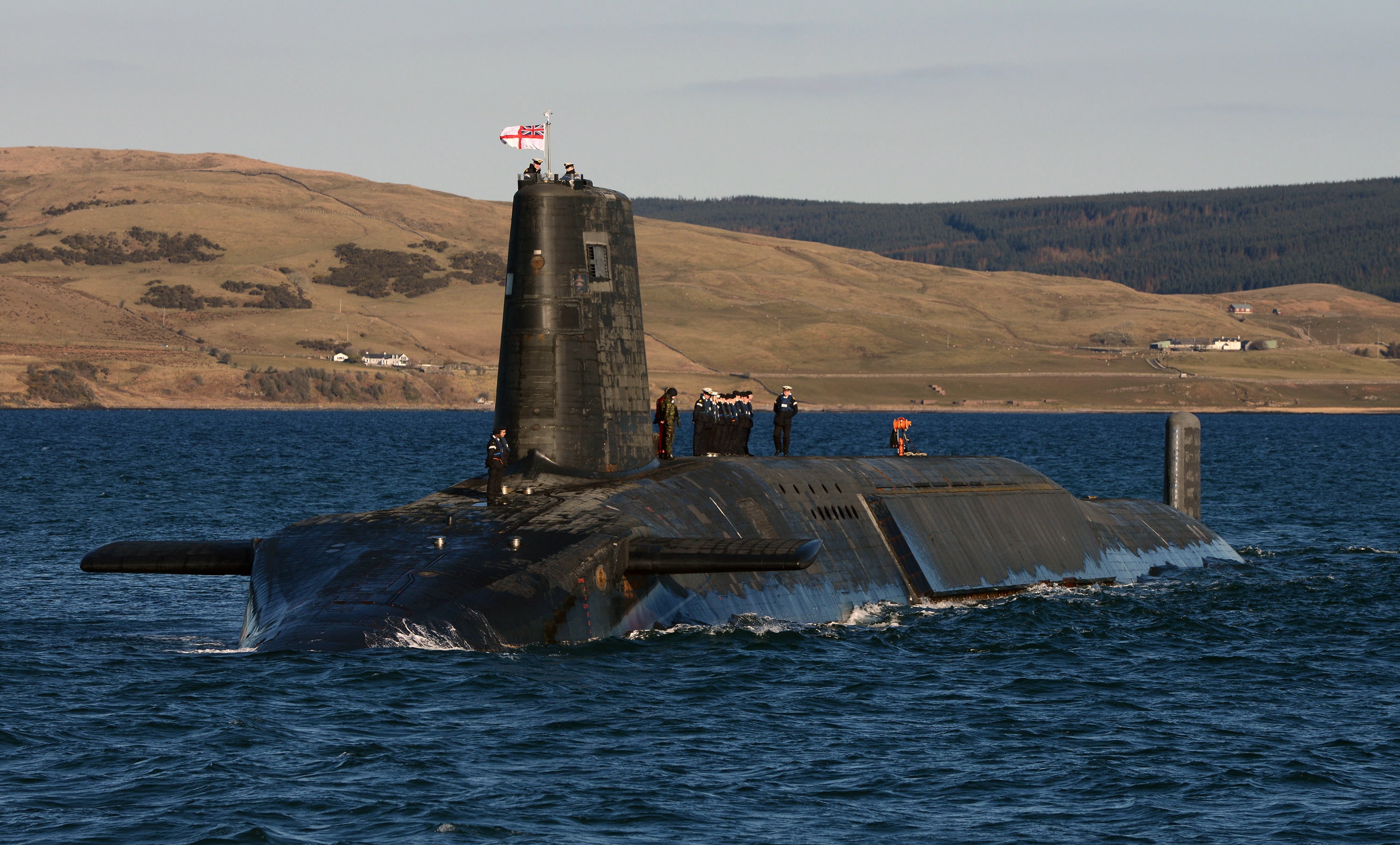Britain’s two Trident nuclear-armed submarines have recently been deployed at sea for a record-breaking five-month period, prompting one former naval commander to warn that the longer missions could jeopardize operational safety.
Based on data provided by campaign group Nukewatch, the investigative journalism website, The Ferret, revealed on November 6 that two Trident-equipped Vanguard-class submarines went out on patrol for 157 days in 2022.
The Nukewatch has been keeping tabs on the movements of Vanguard-class submarines in Clyde throughout 2022. The report said that one sub was at sea from January 1 to June 6, 2022, and another from May 31 to November 3, 2022.
According to The Ferret, Rob Forsyth, who commanded the Royal Navy’s nuclear submarines in the 1970s, long sea patrols could result in “operating errors,” “a breakdown in morale,” and “a threat to nuclear weapon safety.”
Forsyth also lists drug abuse and sexual harassment as potential side effects of lengthy voyages. In October, Adm Ben Key, the chief of the Royal Navy, launched an investigation into the “abhorrent” complaints of sexual assault and harassment against women working on submarines.

The Royal Navy employs the continuous at-sea deterrent (CASD), a nuclear posture that necessitates the constant patrol of at least one nuclear-armed submarine.
According to analysts, the duration of undersea patrols has increased in the past three months, partly because one of the four Trident submarines, HMS Vanguard, was undergoing repairs for seven years after discovering a reactor leak.
The absence of HMS Vanguard, which did not return to duty until July 2022, lowered the number of available submarines to three. The Royal Navy makes no comments regarding the length of Trident submarine patrols, but the longest patrol made publicly known lasted more than 140 days.
According to a Royal Navy spokesperson, investigations into allegations of sexual misconduct in the submarine service are still ongoing. The spokesperson added that this had not impacted the operations, and the service strongly rejects any assertion that it is not operating with robustness.
Recent Incidents Involving Royal Navy’s Vessels
In Early November 2022, the Vanguard-class nuclear submarine HMS Victorious of the British Navy reportedly aborted the “top secret mission” after a major fire broke out. The vessel’s 130+ crew members, including those not on duty, put out the onboard electrical fire.
The submarine was forced to float to the surface at an unidentified location in the North Atlantic due to the fire incident, which prompted the ship’s captain to declare an emergency.
The British ships and submarines could respond to such occurrences immediately without jeopardizing the operational output of the vessels, reported The Sun.
The source claimed that the submarine’s captain had to abort an unnamed “top secret mission” due to the substantial damage caused by fire. The ship was subsequently instructed to return to HMNB Clyde in Faslane, Scotland.

In January 2022, the UK defense ministry stated that a British warship HMS Northumberland collided with a Russian submarine in the North Atlantic Ocean in 2020. The incident is thought to have caused damage to both vessels.
It’s important to note that the information was initially revealed in an episode of the television show Warship: Life At Sea. The television program shows the activities of a Royal Navy warship. The HMS Northumberland was forced to head back to port in Scotland to replace the broken sonar.
Meanwhile, the US nuclear submarine sightings in Scotland in 2022 have doubled compared to the last year. The UK’s nuclear fleet is in Clyde Faslane Naval Base, the primary South Atlantic base for NATO submarines.
The number of times US Navy submarines, including the advanced Virginia-class submarines, have docked at the Scottish port since the start of the full-scale Russian invasion of Ukraine has increased from 43 to 85, reported by UK Defense Journal.
The US Navy previously stated that port visits to Faslane reflect the nation’s commitment to its allies and partners in the region and complement the multiple military exercises, training programs, and other joint operations carried out by Strategic Forces to maintain their readiness for quick, risk-free operations anywhere in the world.
- Contact the author at ashishmichel(at)gmail.com
- Follow EurAsian Times on Google News




